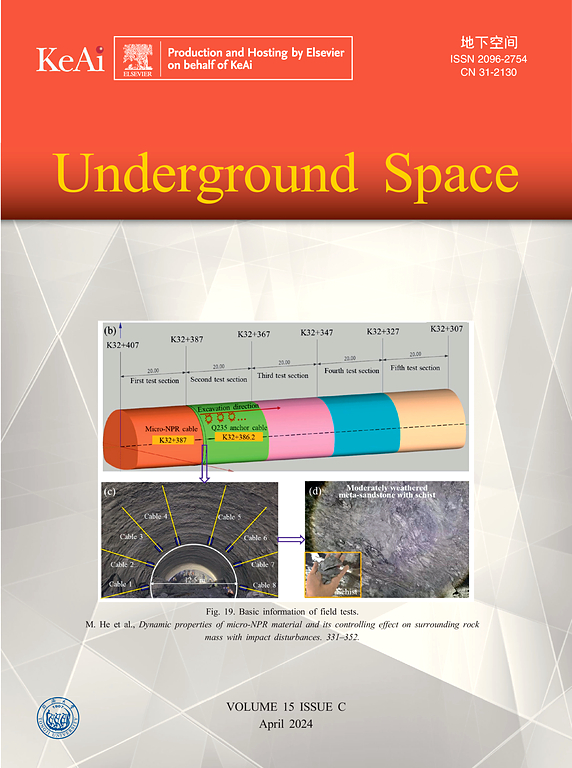精细化岩体参数识别增强隧道开挖安全性评价
IF 8.3
1区 工程技术
Q1 ENGINEERING, CIVIL
引用次数: 0
摘要
本研究采用计算机视觉和深度学习技术对巷道围岩信息进行精细化提取和量化。结合接触测量数据和周围环境参数,提出了利用集成机器学习技术进行岩体质量预测的建议。随后,结合隧道工作面特征和环境数据,建立三维模型。利用强度折减法计算岩体开挖安全系数,并考虑岩体应力、节理滑动等因素,对连续隧洞工作面岩体稳定性进行分析。采用响应面设计方法,对46项试验研究进行了多模型因素影响下开挖安全系数的变化规律研究。该研究揭示了通过离散裂缝网络在野外获得的复杂裂缝产状的准确表征。巷道开挖安全系数与围岩等级呈负相关关系,等级越大,安全系数越小。响应面法有效地揭示了倾角、倾斜方向、间距、密度、群数、安全系数等参数之间的多项式相关性。阐明了这些参数及其耦合状态对安全系数的影响规律。该研究对隧道连续开挖安全性的智能评价具有重要的指导意义。本文章由计算机程序翻译,如有差异,请以英文原文为准。
Enhanced safety assessment on tunnel excavation via refined rock mass parameter identification
This study employs computer vision and deep learning techniques to execute the refined extraction and quantification of rock mass information in tunnel faces. The integration of contact measurement data and surrounding environmental parameters leads to a proposal for rock mass quality prediction, utilizing integrated machine learning techniques. Subsequently, a 3D model is established by incorporating tunnel face features and environmental data. The safety factor of rock mass excavation is calculated through the utilization of the strength reduction method, and the analysis of rock mass stability on the continuous tunnel face is performed, considering factors such as rock stress and joint sliding. The investigation of variation patterns of excavation safety factors, influenced by multiple modelling factors, is conducted through the utilization of a response surface design method in 46 experimental studies. The research reveals the accurate characterization of complex fissure occurrence obtained in the field through a discrete fracture network. Furthermore, a negative correlation between the safety factor of tunnel excavation and the grade of surrounding rock is observed, with an increase in grade resulting in a decrease in the safety factor. The response surface method effectively discloses polynomial correlations between various parameters such as inclination angle, dip direction, spacing, density, number of groups, and the safety factor. This elucidates the impact patterns of these parameters and their coupling states on the safety factor. The study provides significant insights into the intelligent evaluation of safety for continuous tunnel excavation.
求助全文
通过发布文献求助,成功后即可免费获取论文全文。
去求助
来源期刊

Underground Space
ENGINEERING, CIVIL-
CiteScore
10.20
自引率
14.10%
发文量
71
审稿时长
63 days
期刊介绍:
Underground Space is an open access international journal without article processing charges (APC) committed to serving as a scientific forum for researchers and practitioners in the field of underground engineering. The journal welcomes manuscripts that deal with original theories, methods, technologies, and important applications throughout the life-cycle of underground projects, including planning, design, operation and maintenance, disaster prevention, and demolition. The journal is particularly interested in manuscripts related to the latest development of smart underground engineering from the perspectives of resilience, resources saving, environmental friendliness, humanity, and artificial intelligence. The manuscripts are expected to have significant innovation and potential impact in the field of underground engineering, and should have clear association with or application in underground projects.
 求助内容:
求助内容: 应助结果提醒方式:
应助结果提醒方式:


